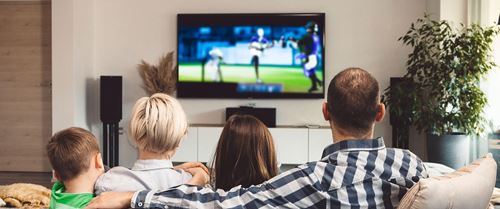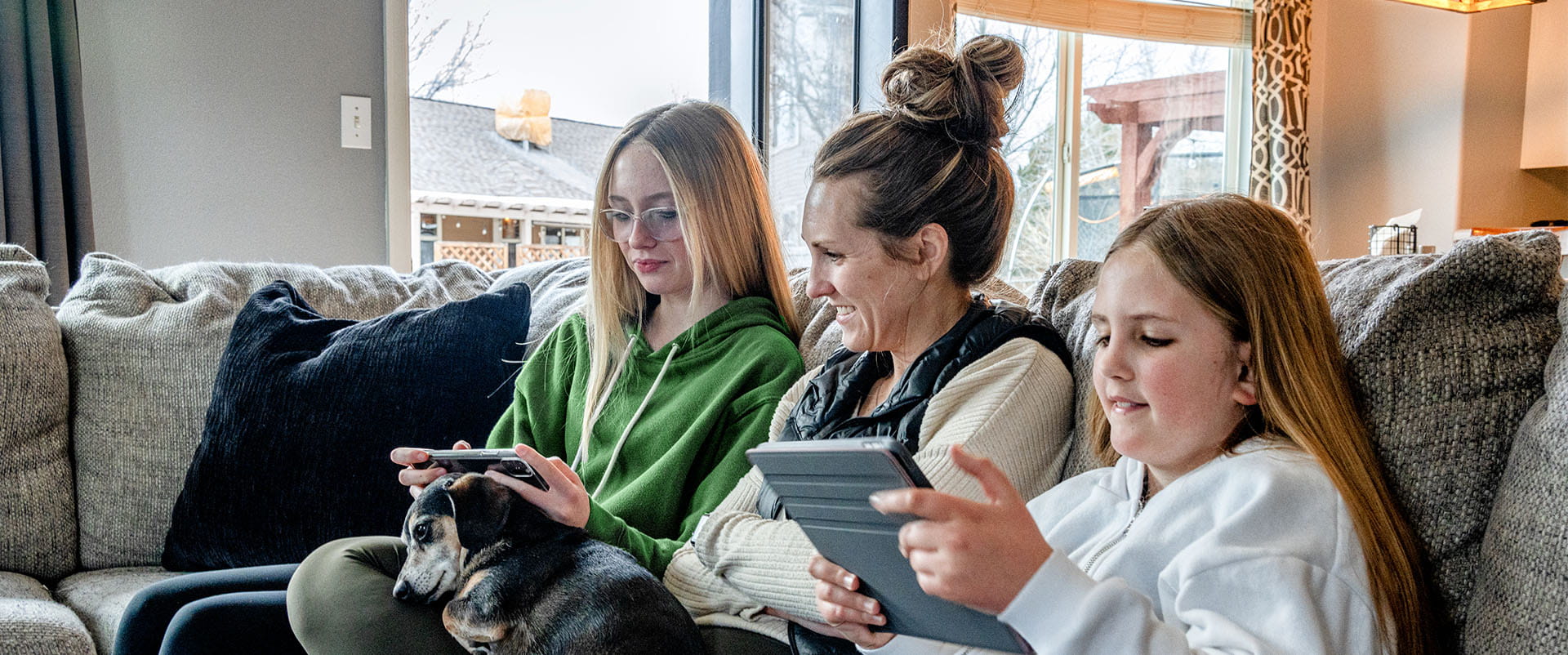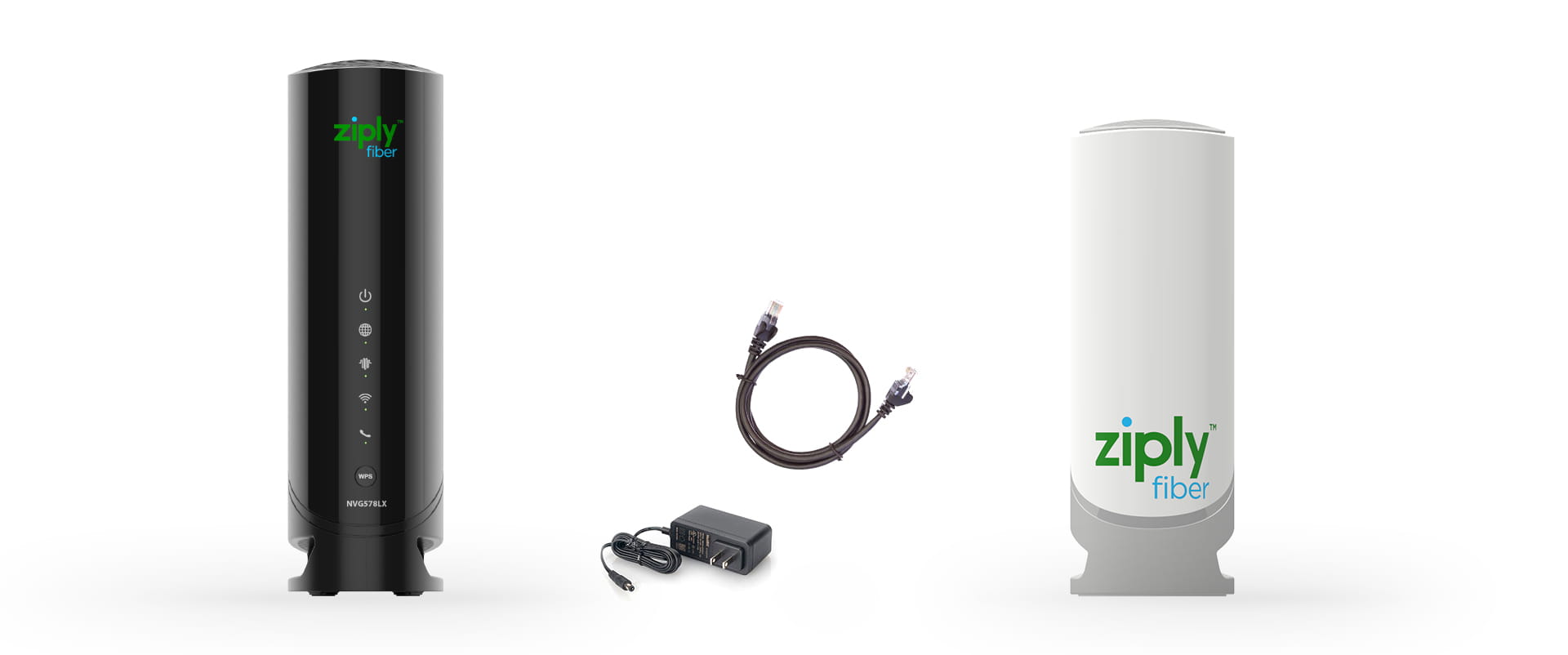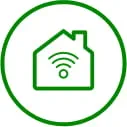Streaming has been quickly taking the place of cable TV. If you haven’t switched yet, you might be wondering if it’s worth it. Maybe you’re worried about losing your favorite shows or concerned that switching is more hassle than it’s worth. Or perhaps you’re concerned that streaming’s just a phase, and cable is the technology that will outlast the trends.
While any new technology takes some time to get used to, streaming is a technology that’s here to stay. Streaming, overall, is less expensive, more versatile and more reliable as we move into the future.
What does it mean to “cut the cord” and switch to streaming?
Streaming just means that you’re using the internet to broadcast programming. Netflix, YouTube and Hulu are all streaming platforms, because the movies and shows you’re watching come from the internet. So, if you have any of these “channels,” you’re already streaming.
Cutting the cord refers to canceling traditional cable, which might be hard to get your head around if sitting back with the evening news, live sports games or prime time programming is part of your routine. Why would you change anything?
The thing is, if you get cable and internet as a bundle from the same company, you’re probably already paying for your cable shows, your streaming channels—and probably a phone line, too. This can rack up charges. And if you have internet, you really don’t need cable TV on top of that. Here’s why.
The benefits of streaming over cable
Streaming allows for more choices and can be tailored to your preferences
With cable, you get the channels you get. And you probably have tons of them. But chances are you only tune into a handful of them. You’re probably paying for hundreds of channels you don’t even need or want.
The question becomes: which channels do you use the most, and are they available on a streaming service? Unlike cable, you have to sign up for a streaming service to get your preferred programs—they don’t just automatically show up, as they do with cable. So, the “hard” work is determining which streaming platform(s) are right for you.
How to choose a streaming service
Do you have kids, avid sports fans, foreign film buffs or politics-obsessed people in your household? Assuming you want them all to have their entertainment needs met, you should start by looking into streaming platforms that cover the media sources they rely on. You can check out a guide, like this one to understand which services offer which channels. Streaming services cater to all sorts of preferences, too, including many Spanish-language options as well as streaming services with non-English programs to learn foreign languages. Another streaming perk is that you’ll get targeting recommendations based on your viewing history—and the content libraries on these platforms are virtually endless.
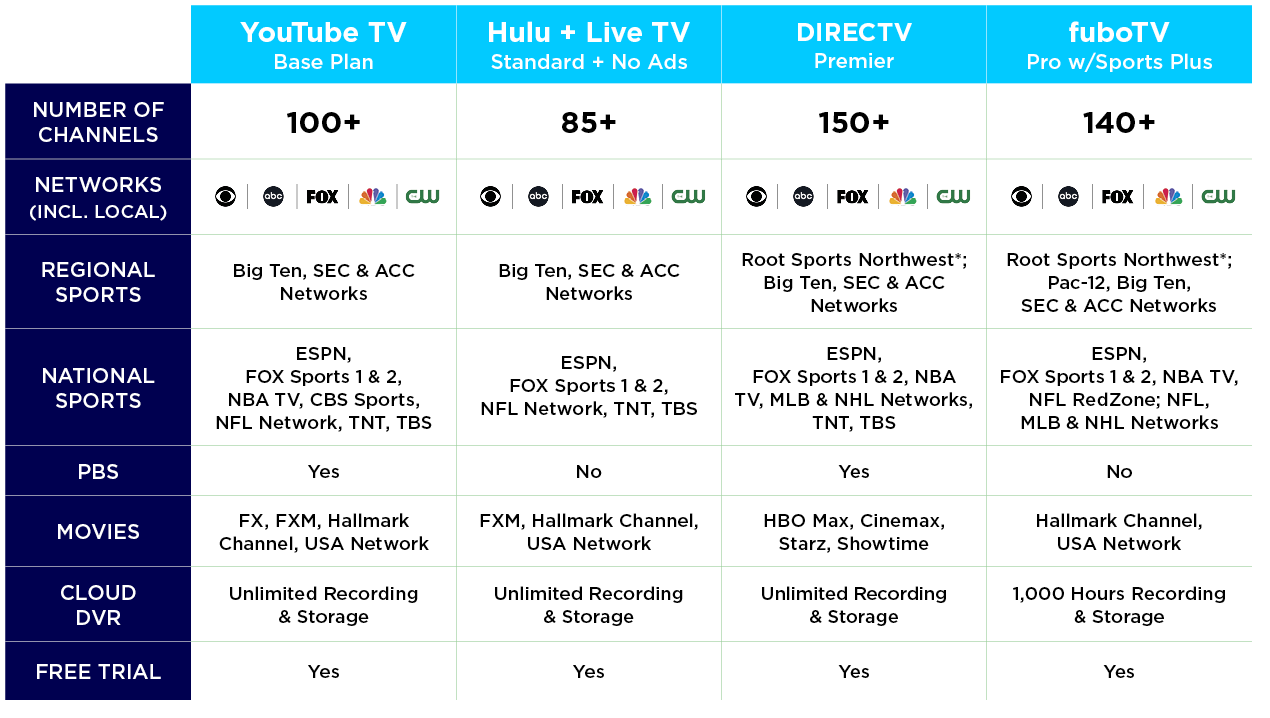
Can I still watch on-demand or live TV?
If you want a streaming experience that mimics cable, a good option is a live TV streaming service. YouTube TV, for example, will allow you to watch a wide range of content with the familiar satisfaction of clicking a remote to browse channels. If you mainly prefer on-demand services like Netflix or Amazon Prime, but you still want a few local channels to watch a local sports game or tune into nightly news, you can cancel cable altogether and hook up an antenna (they make them really small these days—no need to climb up on the roof or adjust rabbit ears!).
Is streaming more expensive?
Maybe you’re concerned you’ll end up with so many subscriptions you’ll end up paying as much, or more than, cable.
Truth is, these streaming channels come in at a much lower price point than traditional cable, and you could find yourself saving upwards of $100/month.
Read more: How to get affordable internet
How do streaming service subscriptions work?
While yes, you could conceivably go subscription crazy, the reality is that with streaming you have more control over what you pay for. Most platforms offer free trials, so you can see if you think it’s worth the investment before your card gets charged. Many platforms also cost under $20 or even under $10 for basic monthly plans. Some are entirely free because they make you sit through advertising; other platforms offer subscription levels, so you can pay less and get ads, or pay slightly more for an ad-free experience. And if you want a couple of services, you may be able to get them as a package for a combined lower rate.
Best of all, you can cancel any given streaming service at any time with no consequence. This is very different than the cable experience, which is all or nothing.
What equipment do I need for streaming?
The other cost-saver with streaming is equipment. You may already have a smart TV, in which case you’re ready to stream without any additional things to plug in. An example of this is Roku: a Roku TV comes with built-in streaming capabilities. Even a Roku remote will come with buttons that take you directly to YouTube, Netflix, Disney+ and Hulu.
Alternatively, you may need to invest in a streaming stick, which is a device you simply plug into a USB port. Those cost around $25 and will give you access to instant content. For a more robust streaming experience in 4K, you could invest in a TV “cube,” which is sort of like a voice-activated, hands-free remote. In the $100-plus range (but with no monthly fees), it can connect to a soundbar, game console and even your satellite dish.
Read more: What equipment do I need for fiber internet?
Streaming is all about convenience
Perhaps the best thing about streaming is that you’re not subject to time constraints. You can watch whatever you want, whenever you want. No need to set the DVR or sit through commercials.
Depending on what service and TV you have, you’ll probably have one remote to navigate your streaming system, and they tend to be more intuitive than TV remotes that toggle among various inputs.
What’s more, once you subscribe to a streaming platform, you can access it on any device with your username and password. Want to watch a show on your laptop, phone or tablet while someone else has the TV? No problem. You don’t even need to be in the same place or the same state or even the same country. You can’t say that about cable.
What kind of internet is best for streaming?
Obviously, for streaming to be an enjoyable experience that replaces cable, you need to have a decent internet connection. And if you’re cutting cable but have a bundle with internet included, you may have to renegotiate with your company.
You really don’t need extremely fast speeds for streaming TV, but the faster and more reliable your connection is, the happier you’ll be. Remember, the speed your internet company says you have applies to a maximum speed. The distance you are from your router and the number of devices you have running at the same time are some of the factors that impact your speed. If your internet continues to be cable even after cutting your cable TV connection, you may experience some lag, peak-time slowdowns or buffering wheels.
The best way to remedy this, if it’s available to you, is to switch to fiber internet. Fiber uses pulses of light to transmit data on lines that go directly to you—that is, you’re not sharing your connection with the neighborhood, so you won’t experience slowdowns when network use is heavy. And with fiber, your upload and download speeds are the same, which means that you won’t encounter delays, glitches or buffering.
Learn more: Fiberoptic internet explained
Streaming is here to stay
With streaming, you get ultimate control over what you watch and what you pay for. With free trials, easy cancellation and myriad platforms to mix and match, streaming is the entertainment solution that’s going to take us into the future. The internet is only going to get faster and more reliable, too. If you have fiber or can upgrade, you’ll be in a great position to switch from cable to streaming. While it may take a mental shift to leave cable behind, you’ll probably find out quickly that streaming is convenient, personalized, affordable and easy to manage.
You may be old enough to remember the early days of cable and how a set top box with a few channels grew into something that took center stage in every American household. Cable has had a great run, but accessing entertainment over the internet is the future. Streaming is the next generation of entertainment, and in time it will only become bigger and better.
Learn more about Ziply Fiber’s fiber-optic internet plans starting at $20/month.

